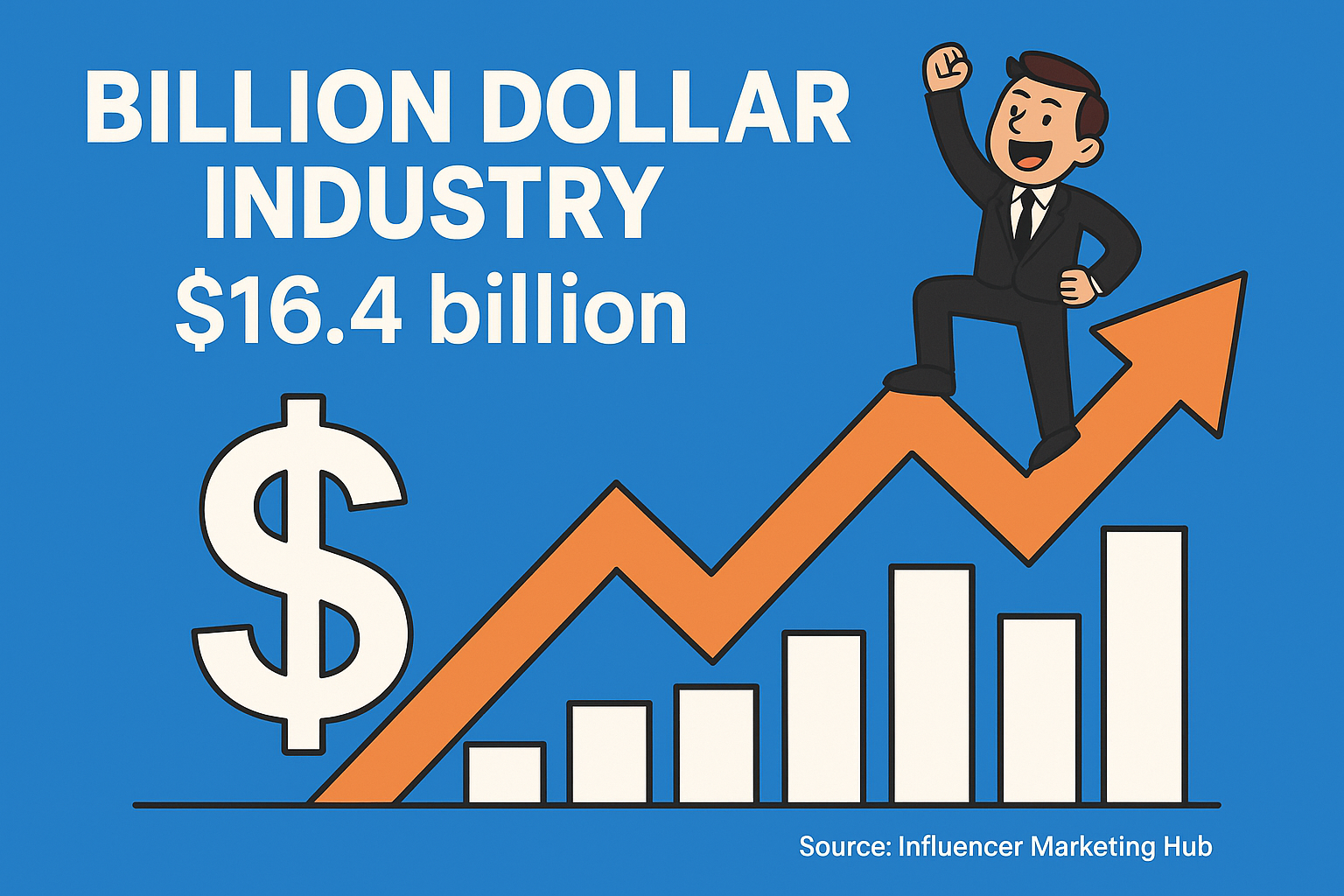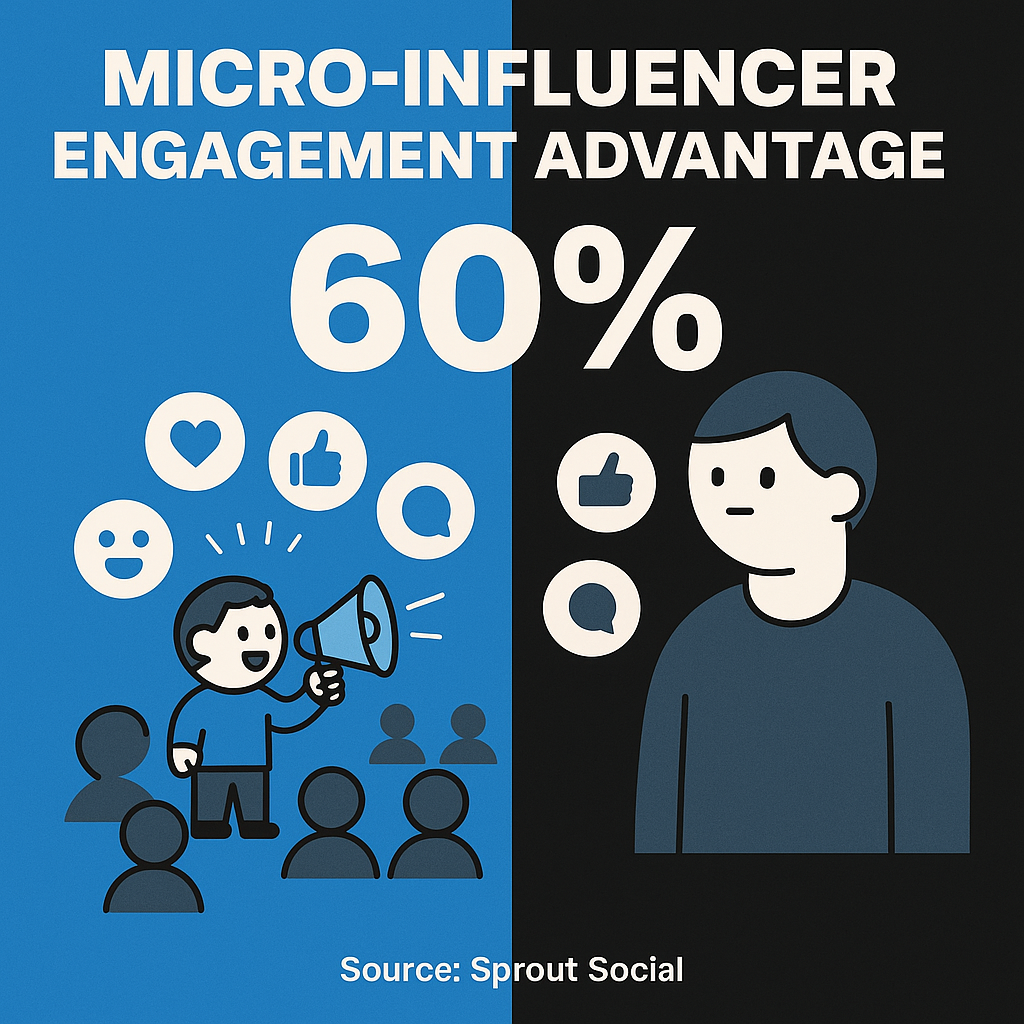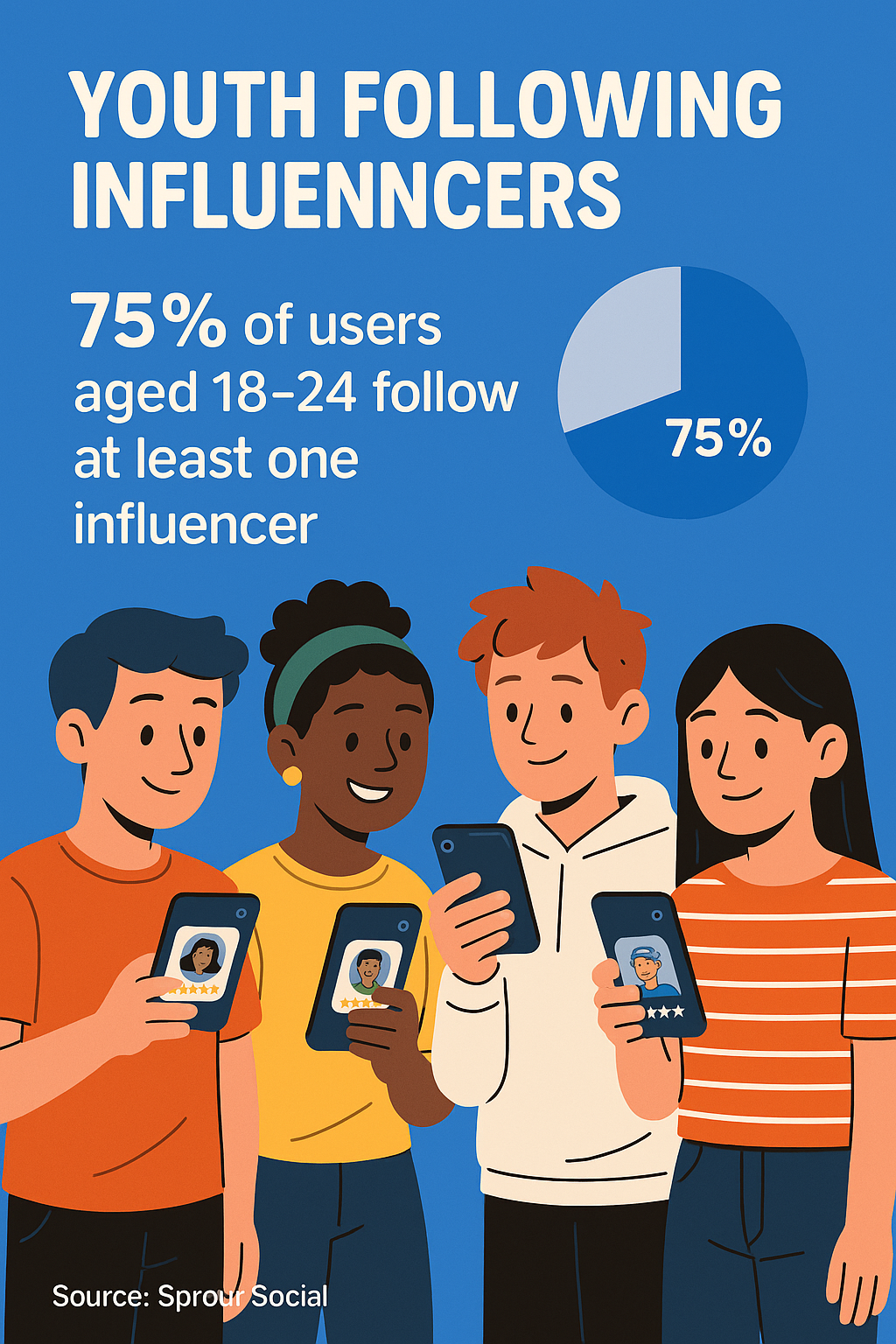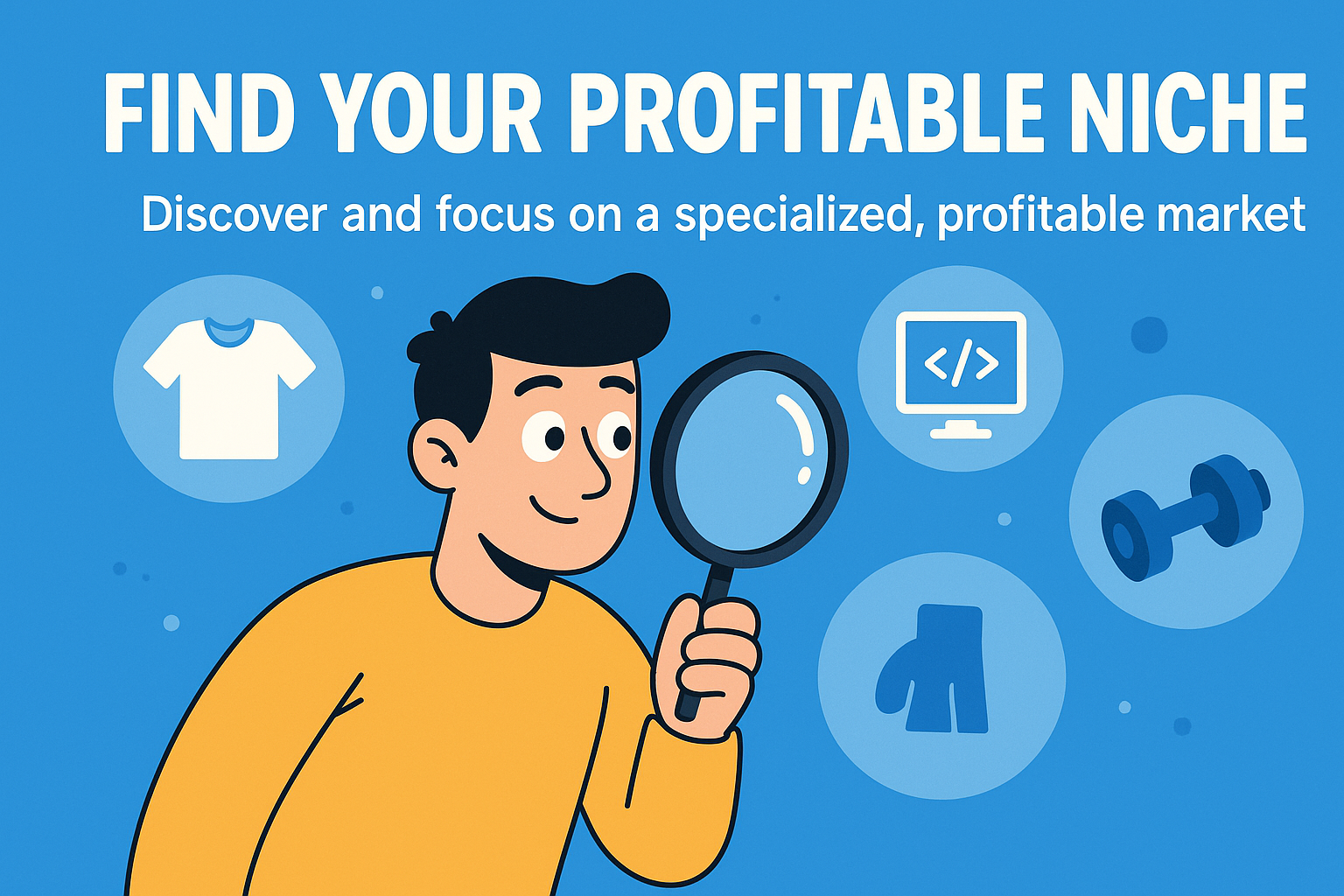Launching Your Own Influencer Marketing Agency: A Guide
So you’re thinking about jumping into the influencer marketing game? Smart move. With brands spending billions on influencer partnerships annually and creators building massive, engaged communities, there’s never been a better time to position yourself as the bridge between these two worlds. But here’s the catch—starting an influencer marketing agency isn’t just about knowing a few TikTokers with decent followings.
You’ll need strategy, systems, and a solid understanding of what makes campaigns actually work. The good news? We’ve got your back. This guide walks you through everything from validating your business idea to scaling your agency into a profit-generating machine. Whether you’re a marketing pro ready to go solo or an entrepreneur spotting a golden opportunity, you’re about to learn the exact steps that separate successful agencies from the ones that fizzle out after three months.
Ready to transform your marketing know-how into a thriving business? Let’s break down the complete roadmap to launching an influencer marketing agency that clients actually want to work with.
Understanding the Influencer Marketing Market
Before you dive headfirst into agency life, you need to understand what you’re getting into. The influencer marketing industry hit $16.4 billion in 2022 and shows no signs of slowing down (Source: Influencer Marketing Hub). But here’s what most people miss—this isn’t just about finding popular creators and throwing money at them.

The market has matured significantly over the past few years. Brands now demand measurable ROI, authentic partnerships, and strategic campaigns that align with their broader marketing goals. This evolution means there’s serious money to be made for agencies that can deliver real results, not just vanity metrics.
| Market Segment | Growth Rate | Average Campaign Budget | Key Success Metrics |
|---|---|---|---|
| Micro-Influencers (10K-100K followers) | 25% annually | $5,000-$25,000 | Engagement rate, conversions |
| Mid-Tier (100K-1M followers) | 18% annually | $25,000-$100,000 | Brand awareness, reach |
| Macro-Influencers (1M+ followers) | 12% annually | $100,000+ | Impressions, brand lift |
What’s driving this growth? Simple—traditional advertising is losing its punch. Micro-influencers deliver 60% higher engagement rates than macro-influencers, and 75% of users aged 18–24 follow at least one influencer (Source: Sprout Social). Translation? There’s massive demand for agencies that can navigate this space effectively.


Developing Your Business Strategy and Niche
Here’s where most new agencies mess up—they try to be everything to everyone. Instead of casting a wide net, successful agencies pick a specific niche and become the go-to experts in that space. This strategy isn’t just smart; it’s essential for standing out in a crowded market.
Your niche could be industry-focused (fashion, fitness, tech) or service-focused (micro-influencer campaigns, video content, event activations). The key is choosing something you understand deeply and can deliver exceptional results for. Remember, it’s easier to become known as “the agency for sustainable brands” than “just another influencer marketing agency.”

- Industry specialization – Focus on specific sectors like beauty, gaming, or B2B tech
- Platform expertise – Become the Instagram Reels specialists or TikTok campaign masters
- Creator tier focus – Specialize in nano, micro, or macro influencer campaigns
- Campaign type – Excel at product launches, brand awareness, or conversion-driven campaigns
- Geographic focus – Target local markets or specific regions initially
Once you’ve identified your niche, validate it by researching potential competitors and talking to prospective clients. Are there gaps in the market? What are brands struggling with that you could solve? This research phase isn’t glamorous, but it’ll save you from building an agency nobody actually wants.

Legal Structure and Business Operations
Time for the not-so-fun but absolutely crucial stuff—setting up your business properly. You can’t just start calling yourself an agency and hope for the best. There are legal requirements, tax considerations, and operational foundations that need to be rock-solid from day one.
Most influencer marketing agencies start as LLCs because they offer flexibility and protection without the complexity of a corporation. You’ll need to register your business, get an EIN from the IRS, and set up business banking accounts. Don’t forget about business insurance—you’re handling other people’s marketing budgets, so professional liability coverage is a must.
| Business Structure | Setup Cost | Tax Benefits | Best For |
|---|---|---|---|
| Sole Proprietorship | $50-$200 | Simple tax filing | Solo operators testing waters |
| LLC | $200-$800 | Pass-through taxation | Small to medium agencies |
| S-Corporation | $500-$1,500 | Self-employment tax savings | Growing agencies with employees |
Beyond the legal structure, you’ll need systems for project management, client communication, and financial tracking. Start simple with tools like Trello for project management and QuickBooks for accounting. As you grow, you can upgrade to more sophisticated platforms, but don’t get caught up in tool overload early on.
Building Your Influencer Network
Your agency’s success hinges on the quality of your influencer relationships. This isn’t about hoarding the biggest names—it’s about cultivating a network of creators who align with your niche and consistently deliver results for clients. Building authentic relationships with creators takes time, but it’s what separates professional agencies from amateur operations.
Start by identifying 50-100 potential influencers in your niche. Use tools like Sprout Social for discovery, but don’t rely solely on platforms. Spend time manually researching creators, engaging with their content, and understanding their personal brands before reaching out.
| Influencer Tier | Follower Range | Avg. Engagement Rate | Typical Rate Range | Best Use Cases |
|---|---|---|---|---|
| Nano | 1K-10K | 8-12% | $100-$500 per post | Local campaigns, product trials |
| Micro | 10K-100K | 4-8% | $500-$5,000 per post | Niche targeting, authenticity |
| Mid-Tier | 100K-1M | 2-5% | $5,000-$25,000 per post | Brand awareness, reach |
| Macro | 1M+ | 1-3% | $25,000+ per post | Mass market campaigns |
When reaching out to potential partners, focus on value, not just opportunity. Your outreach should demonstrate that you understand their content, audience, and goals. Offer something useful upfront—maybe a brand partnership opportunity or valuable industry insights—rather than just asking them to join your “network.”
Service Development and Pricing Models
Now comes the fun part—deciding what services you’ll offer and how much to charge for them. Your service menu should reflect your niche expertise while being comprehensive enough to handle full campaigns from strategy to reporting. Most successful agencies offer packages rather than à la carte services because it’s easier to price and delivers better client results.
Pricing in influencer marketing can be tricky because every campaign is different. Some agencies charge flat fees, others work on commission, and many use a hybrid approach. The key is finding a model that’s profitable for you while delivering clear value to clients.
| Service Type | Typical Pricing Model | Profit Margin | Client Preference |
|---|---|---|---|
| Campaign Strategy | $5,000-$15,000 flat fee | 60-70% | High – clear deliverable |
| Influencer Sourcing | 15-20% of influencer fees | 40-50% | Medium – value perception varies |
| Campaign Management | $10,000-$50,000 monthly retainer | 50-60% | High – comprehensive service |
| Content Creation | $2,000-$10,000 per asset | 45-55% | Medium – depends on quality |
Your pricing strategy should account for the time investment required. Campaign strategy might seem expensive at $10,000, but if it takes 40 hours of expert work, you’re charging $250/hour—reasonable for specialized consulting. Always price based on value delivered, not just time spent.
Client Acquisition Strategies
Building an amazing agency means nothing if you can’t find clients willing to pay for your services. The good news? Social media can be your secret weapon for client acquisition when used strategically. Your agency’s social presence should demonstrate your expertise while showcasing the results you deliver for clients.
Start with your existing network—former colleagues, industry contacts, and even friends who work at companies that might need influencer marketing. Personal referrals convert at much higher rates than cold outreach, and they’re often willing to give you a chance to prove your value.
- Content marketing – Share case studies, industry insights, and behind-the-scenes content
- Industry events – Attend marketing conferences, trade shows, and networking meetups
- Partnership referrals – Build relationships with complementary agencies and freelancers
- LinkedIn outreach – Connect with marketing directors and brand managers in your niche
- PR and thought leadership – Contribute to industry publications and podcasts
When crafting your outreach, focus on the client’s specific challenges rather than generic agency capabilities. A message like “I noticed your recent product launch and have some ideas for amplifying it through micro-influencer partnerships” is infinitely better than “Our agency helps brands with influencer marketing.”
Essential Tools and Technology Stack
You don’t need every tool under the sun to run a successful agency, but you do need the right ones. Your tech stack should streamline operations, improve campaign performance, and make client reporting easier. The key is choosing tools that grow with your agency rather than ones you’ll outgrow in six months.
For influencer discovery and management, platforms like Grin or Upfluence can automate much of the research and outreach process. For project management, Asana or Monday.com help keep campaigns on track and clients informed.
| Tool Category | Recommended Tools | Monthly Cost | Key Features |
|---|---|---|---|
| Influencer Discovery | Grin, Upfluence, Creator.co | $500-$2,000 | Search, analytics, contact management |
| Project Management | Asana, Monday.com, Notion | $50-$200 | Task tracking, client dashboards, timelines |
| Social Listening | Mention, Brandwatch, Sprout Social | $200-$800 | Brand monitoring, competitor analysis |
| Analytics | Google Analytics, Hootsuite Insights | $0-$300 | Performance tracking, ROI measurement |
Don’t forget about content curation and scheduling tools for your own agency’s social media presence. Maintaining a consistent, professional presence across platforms is crucial for attracting both clients and influencers to your roster.
Common Challenges and Solutions
Let’s be real—running an influencer marketing agency isn’t all viral videos and celebrity partnerships. You’ll face unique challenges that can make or break your business if you’re not prepared. The agencies that succeed are the ones that anticipate these obstacles and have systems in place to handle them.
One of the biggest challenges is managing client expectations around campaign performance. Influencer marketing results can be unpredictable, and clients often have unrealistic assumptions about what “viral” means for their business. Clear communication from the start about realistic outcomes and proper measurement metrics is essential.
- Influencer reliability issues – Build a larger network than you need and have backup plans
- Payment disputes – Use detailed contracts and milestone-based payment structures
- Campaign performance fluctuations – Set realistic expectations and focus on long-term trends
- Scaling operational complexity – Invest in systems and processes early, not after problems arise
- Competition from larger agencies – Emphasize your niche expertise and personalized service
Another major challenge is cash flow management. Agency work often involves paying influencers upfront while waiting 30-60 days to get paid by clients. Having sufficient working capital and clear payment terms helps prevent financial stress from derailing promising client relationships.
Revenue Models and Profitability Pathways
Understanding how to make money—real, sustainable money—is what separates hobby agencies from serious businesses. Most successful influencer marketing agencies use multiple revenue streams rather than relying on a single model. This diversification helps smooth out fluctuations and provides stability as you scale.
The most common revenue model is percentage-based fees on campaign media spending. If a client spends $100,000 on influencer partnerships, you might charge a 20-30% management fee ($20,000-$30,000). This model aligns your incentives with client success and scales naturally as campaigns grow.
| Revenue Model | Typical Margin | Pros | Cons |
|---|---|---|---|
| Percentage of spend | 20-30% | Scales with campaign size | Unpredictable monthly income |
| Monthly retainer | 40-60% | Predictable cash flow | Scope creep challenges |
| Project-based | 50-70% | High margins possible | Requires constant sales |
| Performance bonus | 10-25% | Rewards excellent results | Difficult to predict |
Profitability really kicks in when you reach the $500K-$1M annual revenue mark. At this point, you can afford dedicated account managers, better tools, and more sophisticated campaigns that command higher fees. The key is reinvesting profits into systems and team members that allow you to handle more clients without proportionally increasing your workload.
Timeline and Growth Milestones
Rome wasn’t built in a day, and neither is a successful influencer marketing agency. Having realistic timeline expectations helps you stay motivated during the inevitable slow periods and make smart decisions about when to invest in growth versus when to focus on optimization.
Most agencies take 6-12 months to find their footing and establish a solid client base. The first few months involve a lot of relationship building, process refinement, and frankly, learning from mistakes. Don’t expect to be profitable immediately—focus on delivering exceptional results for your first few clients, even if it means slightly thinner margins initially.
| Timeline | Key Milestones | Revenue Target | Team Size | Focus Areas |
|---|---|---|---|---|
| Months 1-6 | First 3 clients, process development | $10K-$50K | 1-2 people | Service refinement, case studies |
| Months 7-12 | 10+ clients, operational systems | $100K-$300K | 2-4 people | Scaling processes, team building |
| Year 2 | 20+ clients, market recognition | $500K-$1M | 5-10 people | Market expansion, specialization |
| Year 3+ | Enterprise clients, thought leadership | $1M+ | 10+ people | Innovation, strategic partnerships |
The agencies that scale successfully are the ones that document their processes early and start delegating tasks as soon as financially feasible. Even in the early days, think about which activities only you can do versus which ones could be handled by a skilled contractor or junior team member.
Building an influencer marketing agency isn’t just about understanding social media or having good relationships with creators. It’s about combining marketing expertise with business acumen, relationship skills, and the ability to deliver measurable results consistently. The opportunity is massive, but success requires treating this as a serious business from day one.
Start small, focus on your niche, and prioritize client results over everything else. With the right approach and realistic expectations, you can build an agency that not only survives but thrives in this dynamic industry. The influencer marketing space needs more professional, results-driven agencies—yours could be one of them.




